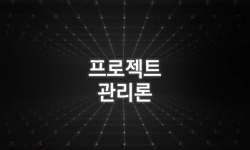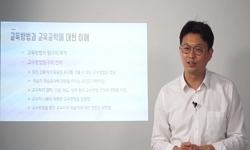The self-portrait photography in modern and contemporary art stands as a critical departure from the generic convention of framing lodged in the history of self-portrait in western art. If the latter usually conveys the identity of the artist sitter a...
http://chineseinput.net/에서 pinyin(병음)방식으로 중국어를 변환할 수 있습니다.
변환된 중국어를 복사하여 사용하시면 됩니다.
- 中文 을 입력하시려면 zhongwen을 입력하시고 space를누르시면됩니다.
- 北京 을 입력하시려면 beijing을 입력하시고 space를 누르시면 됩니다.

정체성의 장소: 니키 리의 <프로젝트> 시리즈에 대한 재고(再考) = The Location of Identity: Revisiting Nikki S. Lee`s 〈Projects〉(1997-2001)
한글로보기https://www.riss.kr/link?id=A102413046
- 저자
- 발행기관
- 학술지명
- 권호사항
-
발행연도
2016
-
작성언어
-
-
주제어
니키 리 ; 프로젝트 ; 자화상 사진 ; 퍼포먼스 사진 ; 정체성 ; 탈정체성 ; Nikki S. Lee ; Projects ; self-portrait photography ; performance photography ; identity ; post-identity
-
KDC
600
-
등재정보
KCI등재
-
자료형태
학술저널
-
수록면
92-119(28쪽)
-
KCI 피인용횟수
1
- DOI식별코드
- 제공처
-
0
상세조회 -
0
다운로드
부가정보
다국어 초록 (Multilingual Abstract)
The self-portrait photography in modern and contemporary art stands as a critical departure from the generic convention of framing lodged in the history of self-portrait in western art. If the latter usually conveys the identity of the artist sitter as defined by the artist him/herself, the former challenges the genre`s assumption of self-identity by deliberately displacing or confusing the role of the artist in the act of framing. In many cases, the production of self-portrait photography involves the technical assistance offered by others physically manipulating the camera outside the frame, which problematizes the way in which the claim of single authorship is bestowed on the sitter-artist in the genre of `self` portrait. In the performance photography, the artist is the subject/author of the art work and simultaneously becomes the object of portraying. Nikki S. Lee`s 〈 Projects 〉(1997-2001) is a series of photographic projects that deals with this shifting spectrum of self-portrait photography`s subject/ object relationship in its process of making and viewing. The artist has portrayed various collective identity clusters including sub-cultural or ethnic minority groups-the punks, the lesbians, the hispanics, the skateboarders, the school girls, the seniors, the exotic dancers, the yuppies, and the trailerpark dwellers in Ohio, etc.-with her own image included in the picture as a member of each group. While she was working on the `project,` the artist actually spent some periods with each target group. Taking a cue from what they regard as a serious cultural fieldwork, several critics claim that Nikki Lee`s work differs from the way in which the artist often engages in an impostering act of identification in contemporary self-portrait scenes-opted and popularized by the likes of Sherman and Morimura. In contrast to their act of impersonation, her work, they conclude, is an attempt to explore the cultural complexity in the field of encountering cultural otherness. On the other hand, there are other critics who point out that her work unfolds a scene of “post-identity discourse,” in which one`s identity is a malleable concept, one that can be designed and altered at one`s whim. In the continuing debate hinging on the subject-object dichotomy in Nikki Lee`s work, one can also include Miwon Kwon`s intervention, which argues that the artist`s project tends to stereotype the cultural others and use their images as a culturally homogenous backdrop that highlights by contrast the artist`s identity masquerade show. This paper attempts to explore what is neglected in the existing theoretical frame of self-portrait photography studies; namely, the viewer`s role. In my view, the subject-object relationship so far articulated in Nikki Lee`s project takes yet another critical turn at a galley setting, where the viewer beholds the artist in the picture and recasts it into an image of otherness that also engages his/her identification in a respective manner. By including the viewer`s outlook in the debate, the paper explores the possibility of how the meaning or implication of the subject-object dichotomy in the work can be radically altered by the act of viewing. With various cultural boundaries that include ethnic, racial, sexual, age-specific, occupational, class divisions that have formed the perspective of their own, the viewers could react to and interpret diversely the cultural others/ourselves depicted in each series of 〈 Projects 〉. Lee`s 〈 Projects 〉 thus highlights that the locus of making one`s identity is conflated with the viewer`s identification with the given subject. In this context, 〈 Projects 〉 is not as much the final `product` of the artist`s identity masquerade, as the locus of production that the viewers` own identity formed accordingly.
참고문헌 (Reference)
1 Ross, David, "Whitney Biennial Exhibition" Whitney Museum of American Art 1993
2 Jones, Amelia, "The ‘Eternal Return’: Self-Portrait Photography as a Technology of Embodiment" (Summer) : 947-, 2002
3 Merleau-Ponty, Maurice, "The Visible and the Invisible" Northwestern University Press 1969
4 Foster, Hal, "The Return of the Real" The MIT Press 1996
5 Guinier, Lani, "The Miner’s Canary: Enlisting Race, Resisting Power, Transforming Democracy" Harvard University Press 2002
6 Fusco, Coco, "The Bodies That Were Not Ours, and Other Writings" Routledge 2001
7 Kwon, Miwon, "Site-Specificity: The Ethnographic Turn" Black Dog Publishing Ltd 2000
8 Hamilton, William L, "Shopping with Nikki S. Lee: Dressing the Part Is Her Art"
9 Trebay, Guy, "Shadow Play"
10 Jones, Amelia, "Seeing Differently: A History and Theory of Identification and the Visual Arts" Routledge 2015
1 Ross, David, "Whitney Biennial Exhibition" Whitney Museum of American Art 1993
2 Jones, Amelia, "The ‘Eternal Return’: Self-Portrait Photography as a Technology of Embodiment" (Summer) : 947-, 2002
3 Merleau-Ponty, Maurice, "The Visible and the Invisible" Northwestern University Press 1969
4 Foster, Hal, "The Return of the Real" The MIT Press 1996
5 Guinier, Lani, "The Miner’s Canary: Enlisting Race, Resisting Power, Transforming Democracy" Harvard University Press 2002
6 Fusco, Coco, "The Bodies That Were Not Ours, and Other Writings" Routledge 2001
7 Kwon, Miwon, "Site-Specificity: The Ethnographic Turn" Black Dog Publishing Ltd 2000
8 Hamilton, William L, "Shopping with Nikki S. Lee: Dressing the Part Is Her Art"
9 Trebay, Guy, "Shadow Play"
10 Jones, Amelia, "Seeing Differently: A History and Theory of Identification and the Visual Arts" Routledge 2015
11 Morrison, Toni, "Race-ing Justice, En-Gendering Power: Essays on Anita Hill, Clarence Thomas, and the Construction of Social Reality" Pantheon 1992
12 Berger, Maurice, "Picturing Whiteness: Nikki S. Lee’s Yuppy Project" (Winter) : 55-57, 2001
13 The Creators Project, "Photographer Nikki S. Lee can Turn into Anyone 비디오 영상"
14 Lee, Nikki S., "Ostfildern-Ruit" Hatje Cantz Publishers 2001
15 Lee, Nikki S., "Ostfildern-Ruit" Hatje Cantz Publishers 2005
16 Schwabsky, Barry, "Nikki S. Lee" 38 (38): 158-159, 1999
17 Valdez, Sarah, "Nikki S. Lee" 90 (90): 149-150, 2002
18 Cotter, Holland, "Nikki S. Lee"
19 Cruz, Amanda, "Nikki S Lee" 10 (10): 42-45, 2007
20 Smith, Roberta, "More Space for Young Artists"
21 Dalton, Jennifer, "Look at Me: Self-Portrait Photography after Cindy Sherman" 22 (22): 47-56, 2000
22 Saltz, Jerry, "Decoy and Daydreamer"
23 Brown, Jayna, "Art, Performance, and Post-Identity" 71 (71): 120-123, 2012
24 Smith, Cherise, "Adrian Piper, and Anna Deavere Smith" Duke University Press 2011
동일학술지(권/호) 다른 논문
-
목포 달성사 명부전 존상의 조성과 중수: 향엄(香嚴), 진열(進悅)
- 미술사와 시각문화학회
- 송은석 ( Song Unsok )
- 2016
- KCI등재
-
17세기 이후 불상의 복장(腹藏) 의례: 법계(法界)의 구현
- 미술사와 시각문화학회
- 강희정 ( Kang Heejung )
- 2016
- KCI등재
-
남정 박노수(藍丁 朴魯壽, 1927-2013)의 국전 출품작
- 미술사와 시각문화학회
- 송희경 ( Song Heekyung )
- 2016
- KCI등재
-
의도된 오독(誤讀) - 일제강점기 낙랑문양(樂浪文樣)의 창출
- 미술사와 시각문화학회
- 주경미 ( Kyeongmi Joo )
- 2016
- KCI등재
분석정보
인용정보 인용지수 설명보기
학술지 이력
| 연월일 | 이력구분 | 이력상세 | 등재구분 |
|---|---|---|---|
| 2027 | 평가예정 | 재인증평가 신청대상 (재인증) | |
| 2021-01-01 | 평가 | 등재학술지 유지 (재인증) |  |
| 2018-01-01 | 평가 | 등재학술지 유지 (등재유지) |  |
| 2015-01-01 | 평가 | 등재학술지 유지 (등재유지) |  |
| 2011-01-01 | 평가 | 등재학술지 유지 (등재유지) |  |
| 2008-01-01 | 평가 | 등재학술지 선정 (등재후보2차) |  |
| 2007-01-01 | 평가 | 등재후보 1차 PASS (등재후보1차) |  |
| 2005-01-01 | 평가 | 등재후보학술지 선정 (신규평가) |  |
학술지 인용정보
| 기준연도 | WOS-KCI 통합IF(2년) | KCIF(2년) | KCIF(3년) |
|---|---|---|---|
| 2016 | 0.37 | 0.37 | 0.47 |
| KCIF(4년) | KCIF(5년) | 중심성지수(3년) | 즉시성지수 |
| 0.46 | 0.45 | 0.903 | 0 |




 KCI
KCI KISS
KISS






